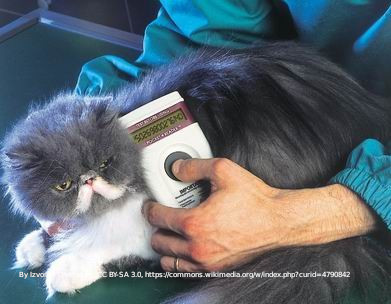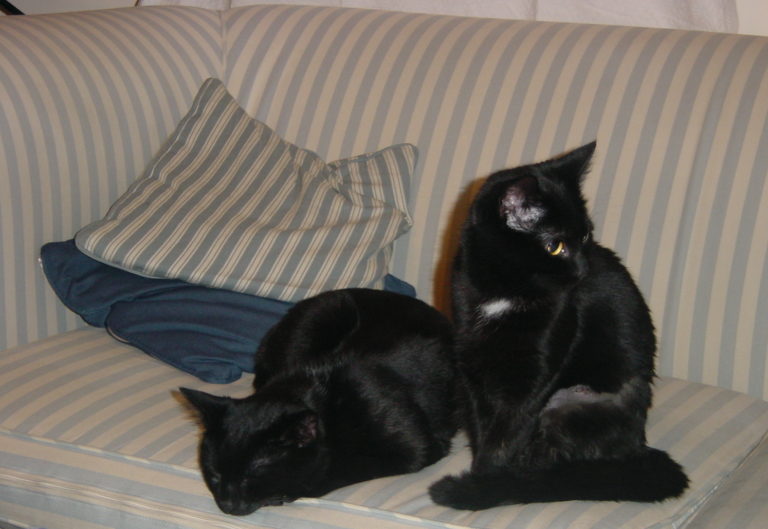Technically, cats with extra toes is called polydactyly. Cats with this genetic trait can have varying numbers of extra toes. Some have a distinct thumb, such as in the photo here. Others just have lots of regular toes. Extra toes are more common on the front feet.
A cat without polydactyly has five toes on each of its front paws, and four on each back foot. A polydactyl cat can have as many as nine toes on each foot. There’s even a Guinness World Record for the cat with the most toes! It’s very unusual for a cat to have extra toes on all four paws.
Where does polydactyly come from?
Some cats’ polydactyly results from a genetic mutation. The gene that regulates toe spacing allows for far more toes than usual. The mutation seems to have spread on ships’ cats. This is borne out by the clusters of polydacytly in south west England and East Coast USA. Cats were very popular as ship’s cats. Wikipedia tells us:
Sailors were long known to value polydactyl cats especially for their extraordinary climbing and hunting abilities as an aid in controlling shipboard rodents. Some sailors thought they bring good luck at sea. The rarity of polydactyl cats in Europe may be because they were hunted and killed due to superstitions about witchcraft.
Famously, the novelist Ernest Hemingway adored polydactyl cats. His home in Florida is now a cat museum and home to 50 or so cats. About half of these have extra toes. There are now two polydactyl cat breeds officially recognised in the USA – Maine Coon Polydactyl and American Polydactyl. Any cat can have extra toes – any breed, either sex, big or small.
Looking after cats with extra toes
Cats with extra toes don’t usually need any more care and attention than an ordinary cat (which is to say lots). The main area to pay attention to is their nails, to make sure they are all keeping to a healthy length. There is a condition known as feline radial hypoplasia which can sometimes resemble polydactyly. It results in what re often termed ‘hamburger feet’ – very wide flat feet rather than the many-toed but otherwise normally shaped polydactyl paw. Feline radial hypoplasia needs to be monitored by your vet, so if you have any doubt about which condition your cat has, if it has extra toes, then see your vet.
Make sure you have a robust scratching post for your polydactyl cat – you’ve seen how much damage regular paws can do so imagine what those extra claws can get up to.



